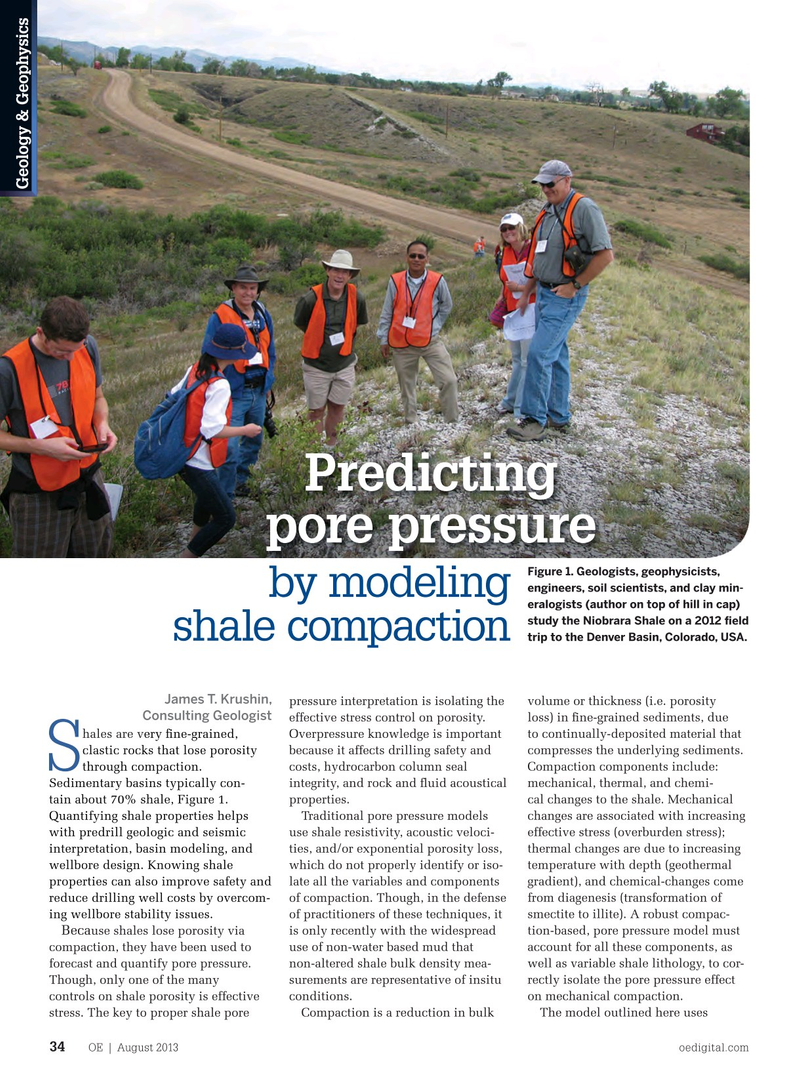
Page 32: of Offshore Engineer Magazine (Aug/Sep 2013)
Read this page in Pdf, Flash or Html5 edition of Aug/Sep 2013 Offshore Engineer Magazine
Geology & Geophysics
Predicting pore pressure
Figure 1. Geologists, geophysicists, engineers, soil scientists, and clay min- by modeling eralogists (author on top of hill in cap) study the Niobrara Shale on a 2012 feld shale compaction trip to the Denver Basin, Colorado, USA.
James T. Krushin, pressure interpretation is isolating the volume or thickness (i.e. porosity
Consulting Geologist effective stress control on porosity. loss) in fne-grained sediments, due hales are very fne-grained, Overpressure knowledge is important to continually-deposited material that clastic rocks that lose porosity because it affects drilling safety and compresses the underlying sediments. through compaction. costs, hydrocarbon column seal Compaction components include:
S
Sedimentary basins typically con- integrity, and rock and fuid acoustical mechanical, thermal, and chemi- tain about 70% shale, Figure 1. properties. cal changes to the shale. Mechanical
Quantifying shale properties helps Traditional pore pressure models changes are associated with increasing with predrill geologic and seismic use shale resistivity, acoustic veloci- effective stress (overburden stress); interpretation, basin modeling, and ties, and/or exponential porosity loss, thermal changes are due to increasing wellbore design. Knowing shale which do not properly identify or iso- temperature with depth (geothermal properties can also improve safety and late all the variables and components gradient), and chemical-changes come reduce drilling well costs by overcom- of compaction. Though, in the defense from diagenesis (transformation of ing wellbore stability issues. of practitioners of these techniques, it smectite to illite). A robust compac-
Beca use shales lose porosity via is only recently with the widespread tion-based, pore pressure model must compaction, they have been used to use of non-water based mud that account for all these components, as forecast and quantify pore pressure. non-altered shale bulk density mea- well as variable shale lithology, to cor-
Though, only one of the many surements are representative of insitu rectly isolate the pore pressure effect controls on shale porosity is effective conditions. on mechanical compaction. stress. The key to proper shale pore Compaction is a reduction in bulk The model outlined here uses
OE | August 2013 oedigital.com 34 034_OE0813_GandG.indd 34 7/22/13 12:31 AM

 31
31

 33
33